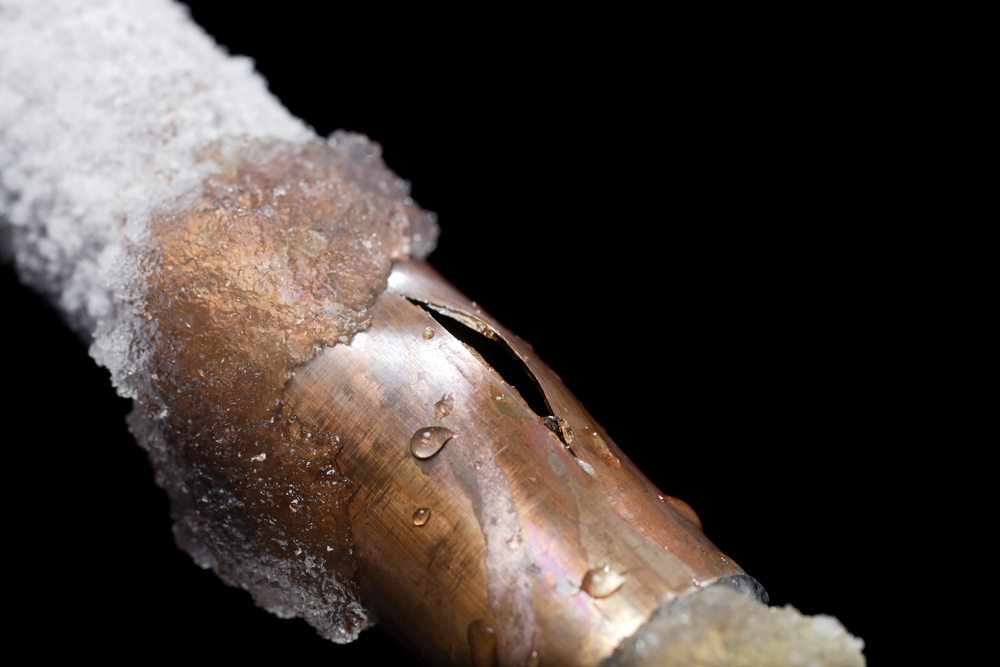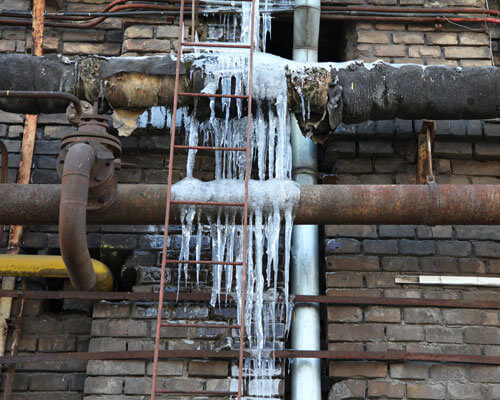Key Approaches for Preventing Frozen Plumbing in Winter
Key Approaches for Preventing Frozen Plumbing in Winter
Blog Article
Just about everyone maintains their personal idea about Helpful Tips to Prevent Frozen Pipes this Winter.

Winter can ruin your pipes, especially by freezing pipelines. Right here's exactly how to prevent it from happening and what to do if it does.
Intro
As temperature levels decline, the risk of frozen pipelines increases, possibly leading to expensive fixings and water damages. Comprehending just how to avoid icy pipes is vital for house owners in cool environments.
Recognizing Frozen Pipes
What causes pipelines to freeze?
Pipelines ice up when revealed to temperatures listed below 32 ° F (0 ° C) for extended durations. As water inside the pipelines ices up, it expands, taxing the pipeline walls and possibly causing them to break.
Risks and problems
Frozen pipelines can cause water system disruptions, residential property damage, and costly repairs. Ruptured pipelines can flood homes and trigger considerable structural damage.
Indications of Frozen Water Lines
Identifying frozen pipes early can avoid them from rupturing.
Just how to recognize icy pipes
Look for decreased water flow from faucets, unusual odors or noises from pipelines, and noticeable frost on revealed pipelines.
Avoidance Tips
Protecting prone pipes
Cover pipelines in insulation sleeves or utilize heat tape to protect them from freezing temperatures. Concentrate on pipes in unheated or external locations of the home.
Home heating strategies
Maintain indoor spaces appropriately heated, particularly areas with plumbing. Open closet doors to enable cozy air to circulate around pipelines under sinks.
Securing Outdoor Pipes
Yard hose pipes and exterior faucets
Detach and drain pipes garden hose pipes prior to winter. Set up frost-proof faucets or cover outdoor faucets with protected caps.
What to Do If Your Pipelines Freeze
Immediate activities to take
If you believe icy pipelines, maintain faucets open to eliminate stress as the ice thaws. Make use of a hairdryer or towels taken in warm water to thaw pipes slowly.
Long-Term Solutions
Structural adjustments
Consider rerouting pipelines far from exterior walls or unheated locations. Add extra insulation to attic rooms, cellars, and crawl spaces.
Updating insulation
Invest in top quality insulation for pipes, attic rooms, and wall surfaces. Appropriate insulation helps preserve regular temperature levels and decreases the risk of frozen pipelines.
Verdict
Avoiding frozen pipelines requires positive procedures and quick feedbacks. By understanding the reasons, signs, and preventive measures, property owners can secure their pipes during cold weather.
6 Proven Ways to Prevent Frozen Pipes and Protect Your Home
Disconnect and Drain Garden Hoses
Before winter arrives, start by disconnecting your garden hoses and draining any remaining water. Close the shut-off valves that supply outdoor hose bibs and leave the outdoor faucet open to allow any residual water to drain. For extra protection, consider using faucet covers throughout the colder months. It’s also important to drain water from any sprinkler supply lines following the manufacturer’s directions.
Insulate Exposed Pipes
Insulating your pipes is an effective way to prevent freezing. Pipe insulation is readily available at home improvement stores and is relatively inexpensive. Pay close attention to pipes in unheated areas such as the attic, basement, crawl spaces, or garage. Apply foam insulation generously to create a buffer against the cold. You can also wrap your pipes in heat tape or thermostat-controlled heat cables for added warmth.
Seal Air Leaks
Inspect your home for any cracks or openings that could let in cold air. Seal any holes around the piping in interior or exterior walls, as well as the sill plates where your home rests on its foundation. Additionally, make sure to keep your garage door closed unless you’re entering or exiting. Leaving it open creates a significant air leak that can lead to frozen pipes.
Allow Warm Air Circulation
During cold snaps, it’s essential to allow warm air to circulate evenly throughout your home. Leave interior doors ajar to promote better airflow. Open kitchen and bathroom cabinets to help distribute heat consistently around the rooms. If you have small children or pets, be sure to remove any household chemicals or potentially harmful cleaners from open cabinets for safety.
Let Faucets Drip
A small trickle of water can make a big difference in preventing ice formation inside your pipes. When temperatures drop significantly, start a drip of water from all faucets served by exposed pipes. This continuous flow helps prevent the water from freezing. Additionally, running a few faucets slightly can relieve pressure inside the pipes, reducing the chances of a rupture if the water inside does freeze.
https://choateshvac.com/6-proven-ways-to-prevent-frozen-pipes-and-protect-your-home/

I'm just very enthusiastic about How to Prevent Your Pipes From Freezing and I'm hoping you enjoyed reading the blog post. Sharing is nice. Helping others is fun. Thanks so much for going through it.
Estimating Report this page